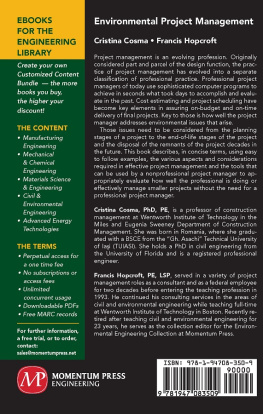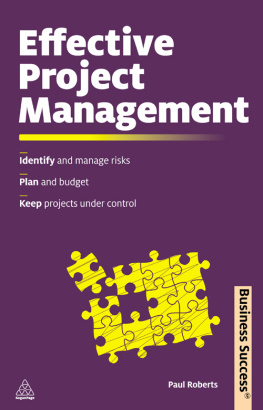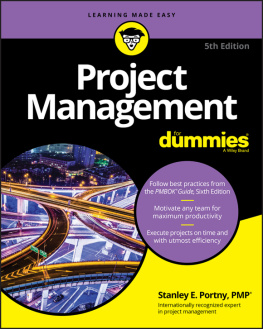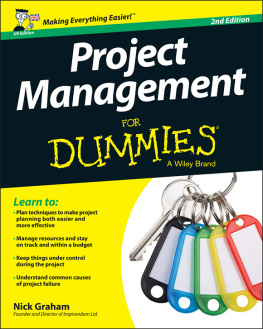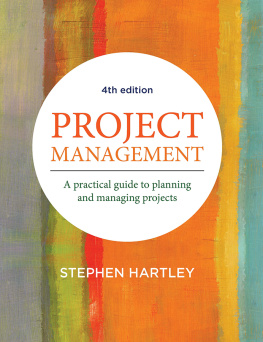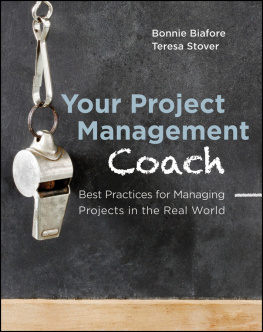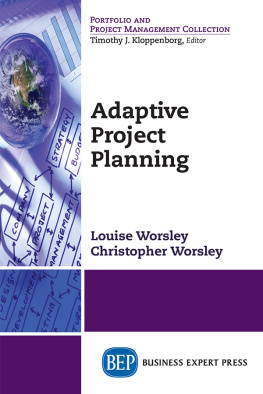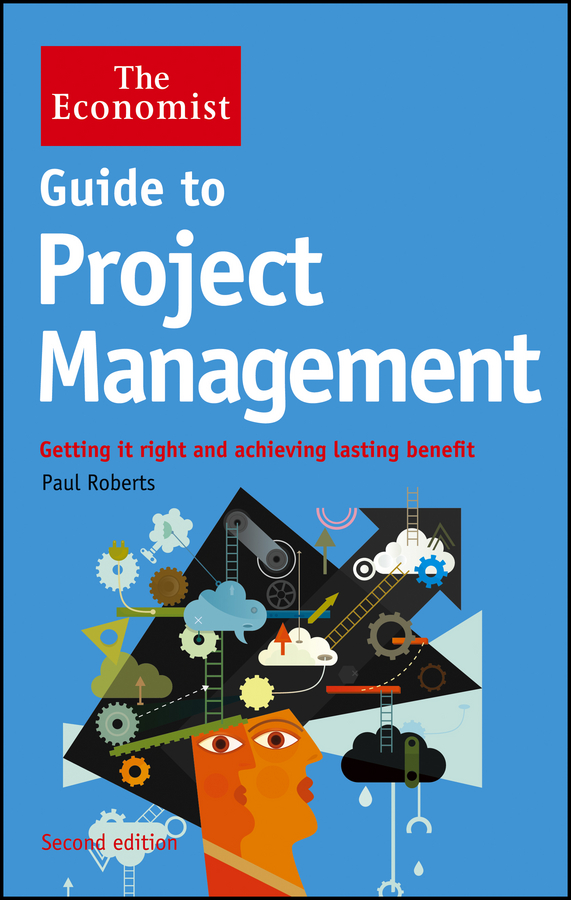Contents
OTHER ECONOMIST BOOKS
Guide to Analysing Companies
Guide to Business Modelling
Guide to Business Planning
Guide to Cash Management
Guide to Decision Making
Guide to Economic Indicators
Guide to the European Union
Guide to Financial Management
Guide to Financial Markets
Guide to Hedge Funds
Guide to Investment Strategy
Guide to Management Ideas and Gurus
Guide to Managing Growth
Guide to Organisation Design
Guide to Supply Chain Management
Numbers Guide
Style Guide
Book of Isms
Book of Obituaries
Brands and Branding
Business Consulting
Business Strategy
Buying Professional Services
The City
Coaching and Mentoring
Doing Business in China
Economics
Emerging Markets
Managing Uncertainty
Marketing
Megachange
Modern Warfare, Intelligence and Deterrence
Organisation Culture
Successful Strategy Execution
The World of Business
Directors: an AZ Guide
Economics: an AZ Guide
Investment: an AZ Guide
Negotiation: an AZ Guide
Pocket World in Figures

Cover Design: BRILL
Cover Illustration: DrAfter123
Copyright 2007, 2013 by The Economist Newspaper Ltd. All rights reserved.
Text Copyright 2007, 2013 by Paul Roberts. All rights reserved.
Published by John Wiley & Sons, Inc., Hoboken, New Jersey.
Published simultaneously in Canada.
Published in Great Britain and the rest of the world by Profile Books Ltd
No part of this publication may be reproduced, stored in a retrieval system, or transmitted in any form or by any means, electronic, mechanical, photocopying, recording, scanning, or otherwise, except as permitted under Section 107 or 108 of the 1976 United States Copyright Act, without either the prior written permission of the Publisher, or authorization through payment of the appropriate per-copy fee to the Copyright Clearance Center, Inc., 222 Rosewood Drive, Danvers, MA 01923, (978) 750-8400, fax (978) 646-8600, or on the Web at www.copyright.com . Requests to the Publisher for permission should be addressed to the Permissions Department, John Wiley & Sons, Inc., 111 River Street, Hoboken, NJ 07030, (201) 748-6011, fax (201) 748-6008, or online at http://www.wiley.com/go/permissions .
Limit of Liability/Disclaimer of Warranty: While the publisher and author have used their best efforts in preparing this book, they make no representations or warranties with respect to the accuracy or completeness of the contents of this book and specifically disclaim any implied warranties of merchantability or fitness for a particular purpose. No warranty may be created or extended by sales representatives or written sales materials. The advice and strategies contained herein may not be suitable for your situation. You should consult with a professional where appropriate. Neither the publisher nor author shall be liable for any loss of profit or any other commercial damages, including but not limited to special, incidental, consequential, or other damages.
For general information on our other products and services or for technical support, please contact our Customer Care Department within the United States at (800) 762-2974, outside the United States at (317) 572-3993 or fax (317) 572-4002.
Wiley publishes in a variety of print and electronic formats and by print-on-demand. Some material included with standard print versions of this book may not be included in e-books or in print-on-demand. If this book refers to media such as a CD or DVD that is not included in the version you purchased, you may download this material at http://booksupport.wiley.com . For more information about Wiley products, visit www.wiley.com .
Library of Congress Cataloging-in-Publication Data:
ISBN 978-1-118-38370-4 (Hardcover); ISBN 978-1-118-42171-0 (ebk); ISBN 978-1-118-60783-1 (ebk); ISBN 978-1-118-41742-3 (ebk)
To Sarah, Matthew and Ruby, with love
Acknowledgements
I WOULD LIKE TO THANK my Fifthday business partner, Roger Middleton, who directed and developed our organisation during the time I devoted to writing this book. Thanks also to Stephen Brough at Profile Books for offering sound advice and for editing the text, and to Penny Williams for identifying and making essential changes as the book neared completion. Lastly, I would like to convey my thanks to the many clients of Fifthday who have shown their enthusiasm for this book and helped me better understand the practical challenges which must be overcome in order to implement an effective project management environment.
Introduction to second edition
WHEN I COMPLETED the first edition of this book in 2007, I did not anticipate either the popularity of the subject, or that at some time in the future a second edition might be necessary. Surely, I thought, the way in which we govern and manage change would remain relatively stable for many years to come. But change is inevitable, and as I said in the first edition:
Many businesses do not change when they need to, nor do they change when they have to. If they did, many fewer would fail. But, like people, they only change when they want to .
In the intervening years, the world has been transformed by a serious and challenging economic crisis, resulting in the failure of many businesses that did not change when they needed to or had to. The success of those that remain depends on their being able to identify and fund opportunities, beat the competition and manage their own ability to change themselves accordingly.
The principles of project management contained in this book remain as sure a foundation for change as ever. However, in this rapidly changing world, most organisations have discovered that some areas of management have become significantly more relevant, and these are developed in this second edition:
- Project prioritisation because demand for resources will always outstrip supply.
- Creating, refining and agreeing the vision because without one, project plans may fail to deliver our expectations.
- Controlling change because there remains huge pressure to adapt businesses and projects to meet quickly changing conditions both inside and outside organisations.
Thus certain tools in the box have become more important.
I regularly receive messages from readers around the world who have found this book helpful and supportive. I hope that they, and you, will discover in this second edition sufficient to achieve lasting benefit through the effective management of change in these difficult times.
Paul Roberts
November 2012
Introduction
MANY BUSINESSES DO NOT CHANGE when they need to, nor do they change when they have to. If they did, many fewer would fail. But, like people, they only change when they want to.
If a change in the way an organisation achieves successful project outcomes is to be considered, it should be seen as a culture change, involving adjustments in mindset, values and behaviour; it may involve abandoning norms and sacred cows.
Managing projects cannot be separated from managing the whole business. Effective management of business as usual delivers evolutionary improvements. Good project management brings about step changes in performance. If projects are to deliver profitable outcomes, then it is as crucial to look outside traditional project environment as it is to look inside. Yet project management is too often considered a discipline that applies only to those called project managers. It is delegated to people who struggle against sometimes impossible odds to deliver a successful outcome. Experience demonstrates that a project requires the collaboration of many stakeholders, including those who commission and finance it, those who will use the end product and those who build it. It takes a whole organisation to make a project a success.


